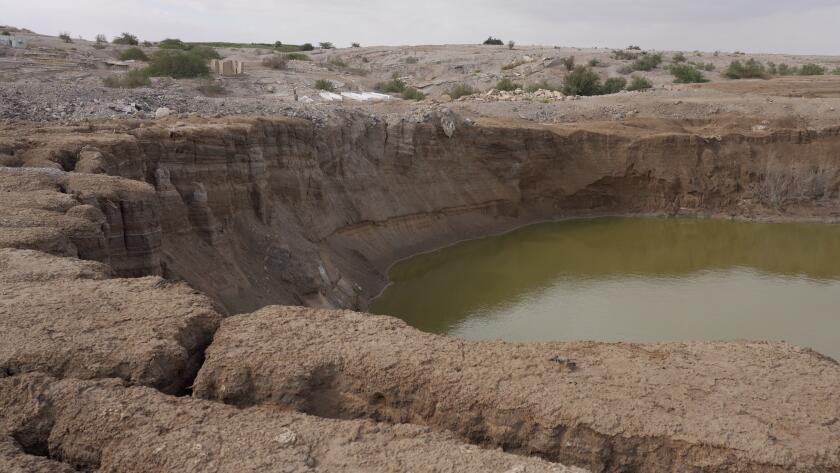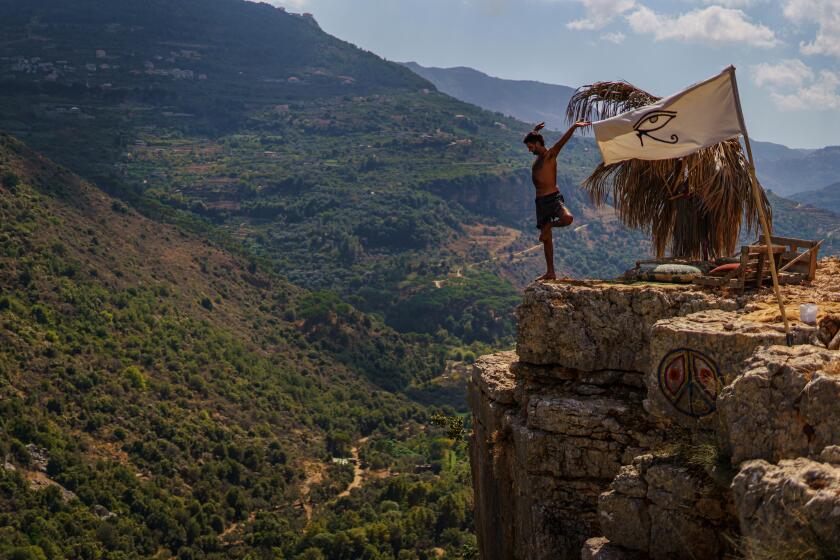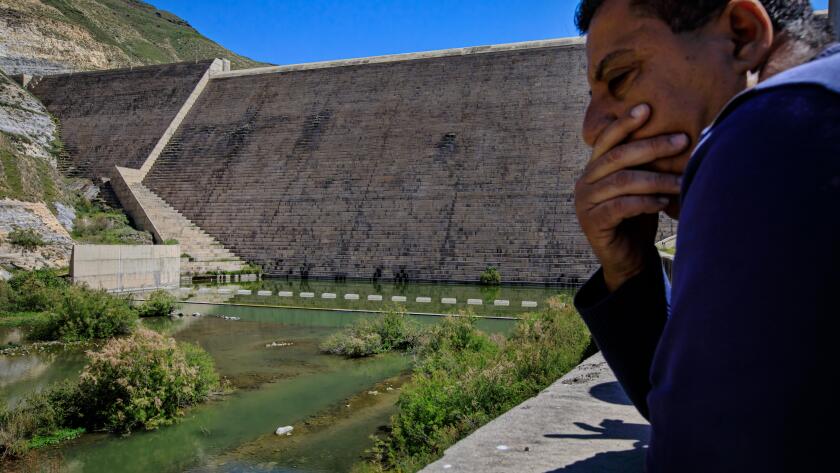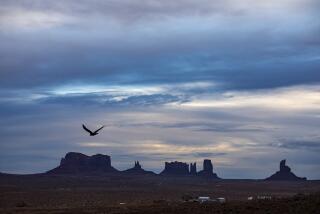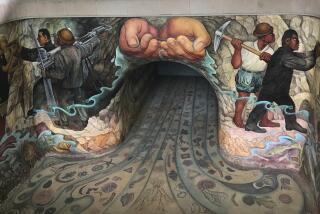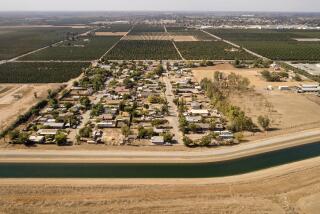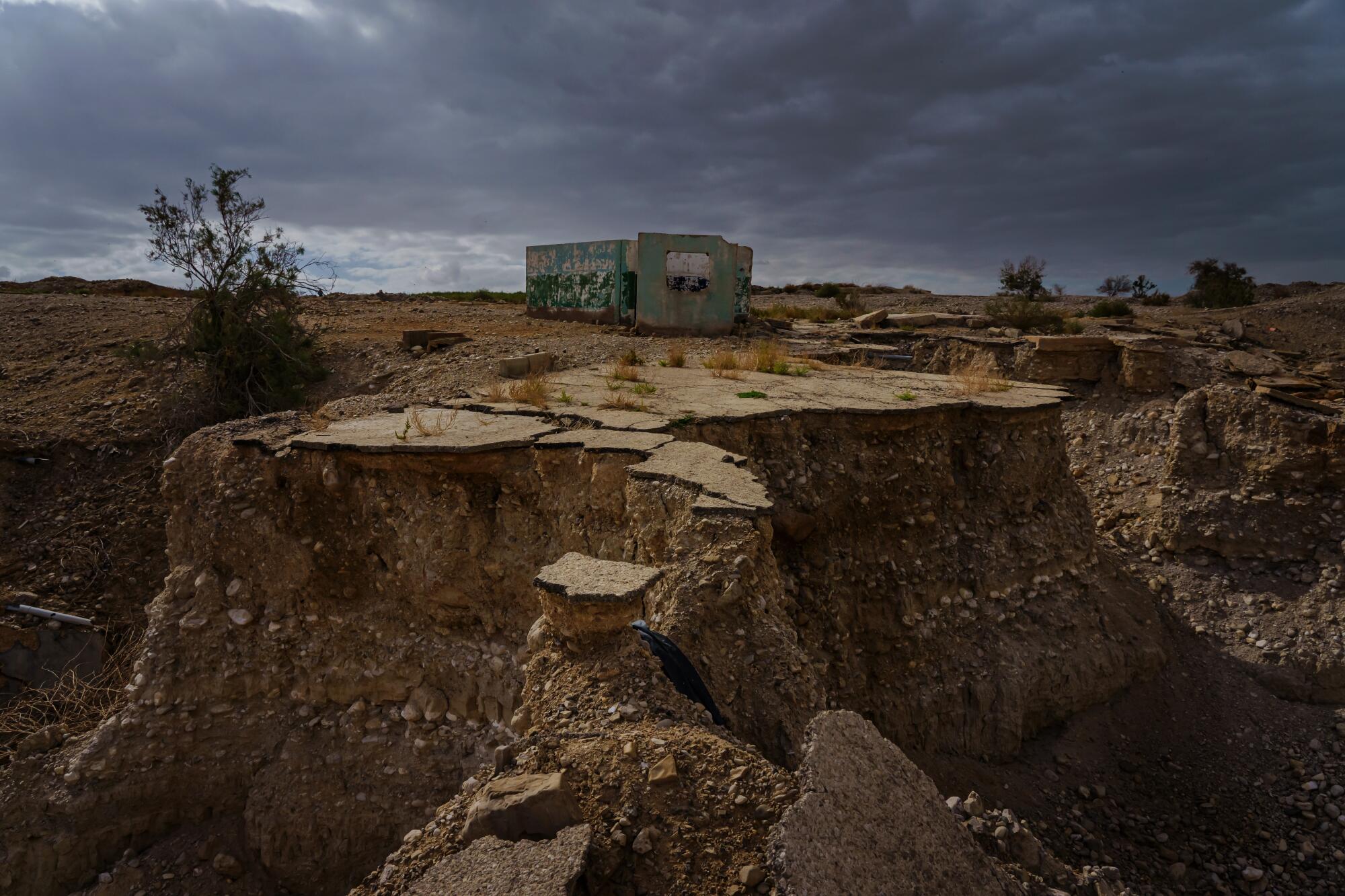
GHOR HADITHA, Jordan — The first time people here saw a sinkhole, they thought a small asteroid had slammed into the Dead Sea’s salt-encrusted shore.
Then others appeared.
One swallowed the edge of a state-owned building. Another opened near a house and forced the family to move. Worried farmers scanned their fields and abandoned their harvests. At one point, a chunk of highway collapsed, disappearing several stories deep and leaving a lone PVC pipe that ran like a high wire over the crater.
Finally, the residents of Ghor Haditha realized, the problem was literally beneath their feet, a symptom of the Dead Sea’s death and a disturbing measure of the parched land Jordan has become. This small kingdom has long ranked high on the list of water-poor countries. But a mix of a ballooning population, regional conflicts, chronic industrial and agricultural mismanagement and now climate change may soon bring it another distinction: the first nation to possibly lose viable sources of fresh water.
The sinkholes are a harbinger of a future in a Middle East precariously balanced on dwindling resources. With the Dead Sea — a lake, really — shrinking at a rate of 3 to 5 feet a year, its salt water is replaced by fresh water, which rushes in and dissolves subterranean salt layers, some of them hundreds of feet below. Cavities form, and the soil collapses into subsurface voids, creating sinkholes.
Jordan experiences massive droughts as the Dead Sea continues to evaporate.
The government says a dam is necessary to provide drinking water in an era of rising temperatures and climate change. Activists say it’s another corrupt government project.
In the last three decades, the Dead Sea’s level has fallen almost 100 feet. The rate of loss is accelerating, and sinkholes now number in the thousands, like a rash spreading on the exposed seabed.
“When I was younger, the water used to reach all the way up to that field,” said Hassan Kanazri, a 63-year-old tomato farmer, as he pointed to a spot some 300 yards away from the water’s edge. He stepped onto a patch of dark brown earth speckled with holes; the soft dirt gave way underfoot.
“We can’t use tractors here. The land is too weak, so we’ve had to plow manually,” he said.
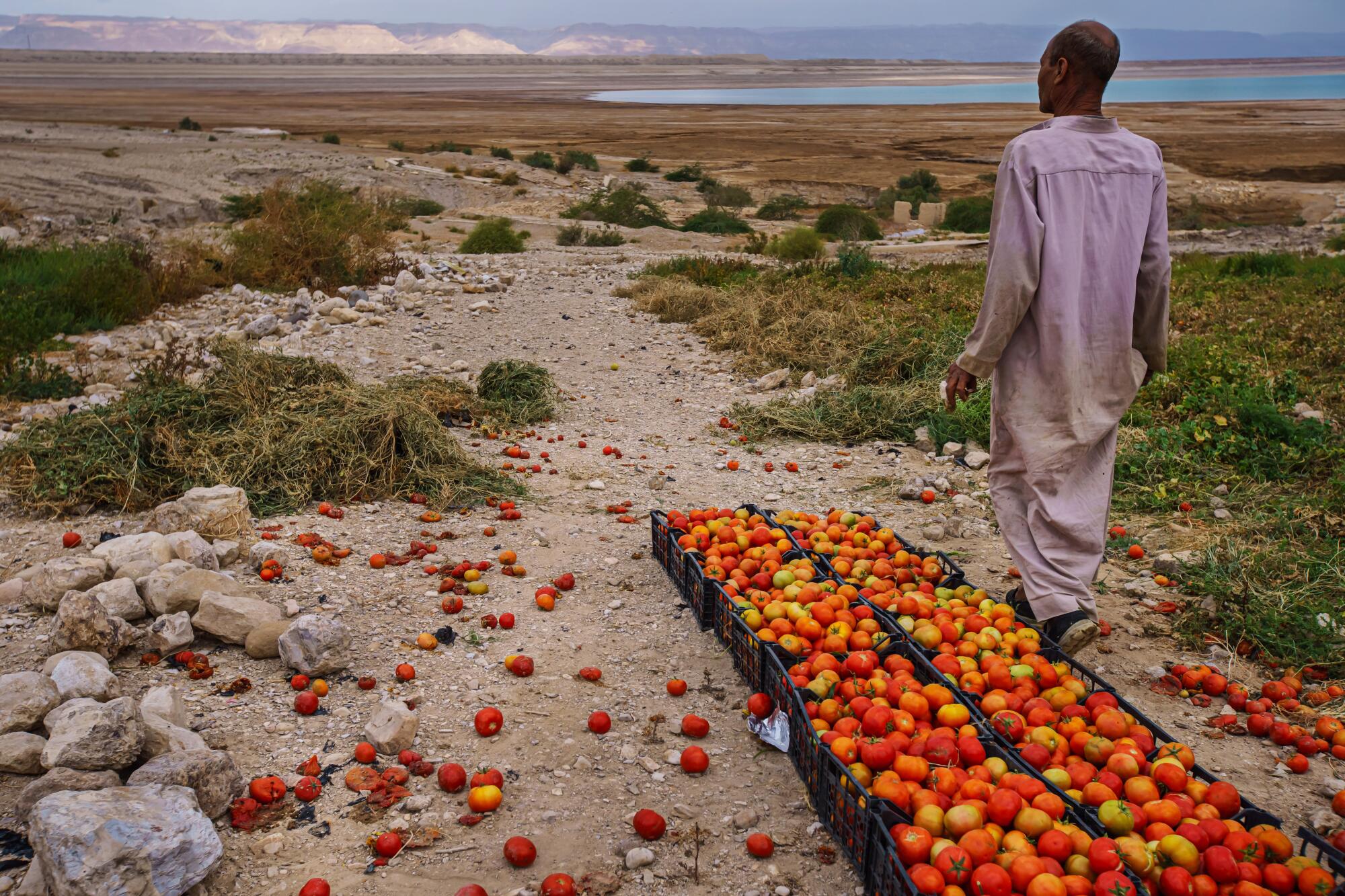
The sinkholes are a piece of a larger danger revealing how Jordan’s perennial thirst is worsening. A virtually landlocked desert kingdom with few resources, the country’s yearly decrease in rainfall could lead to a 30% reduction by 2100, according to Stanford University’s Jordan Water Project. Jordan’s aquifers, ancient groundwater reservoirs that take long to replenish, are being pumped at a furious pace, even as the pandemic has increased demand by 40%, the Water Ministry says. And precarious finances mean desalinization, which serves some of Jordan’s richer neighbors, is — for now — too expensive an option.
“The situation here is bleak,” says Water Ministry spokesman Omar Salameh. “Without a huge amount of support to execute development projects, Jordan doesn’t have the resources to provide water.”
To understand the crisis one need only take a drive on Highway 40, which stretches east from Amman toward the Iraqi border. With the capital in the rearview, you cross through to the Azraq wetlands — once a lush, water-filled stopover for migratory birds now decimated by over-reliance on an aquifer there — before you reach a vast expanse of desert. Some 92% of the country gets less than 200 millimeters — about 8 inches — of rainfall per year, with fewer than 10 countries in the world getting less annual precipitation than Jordan.
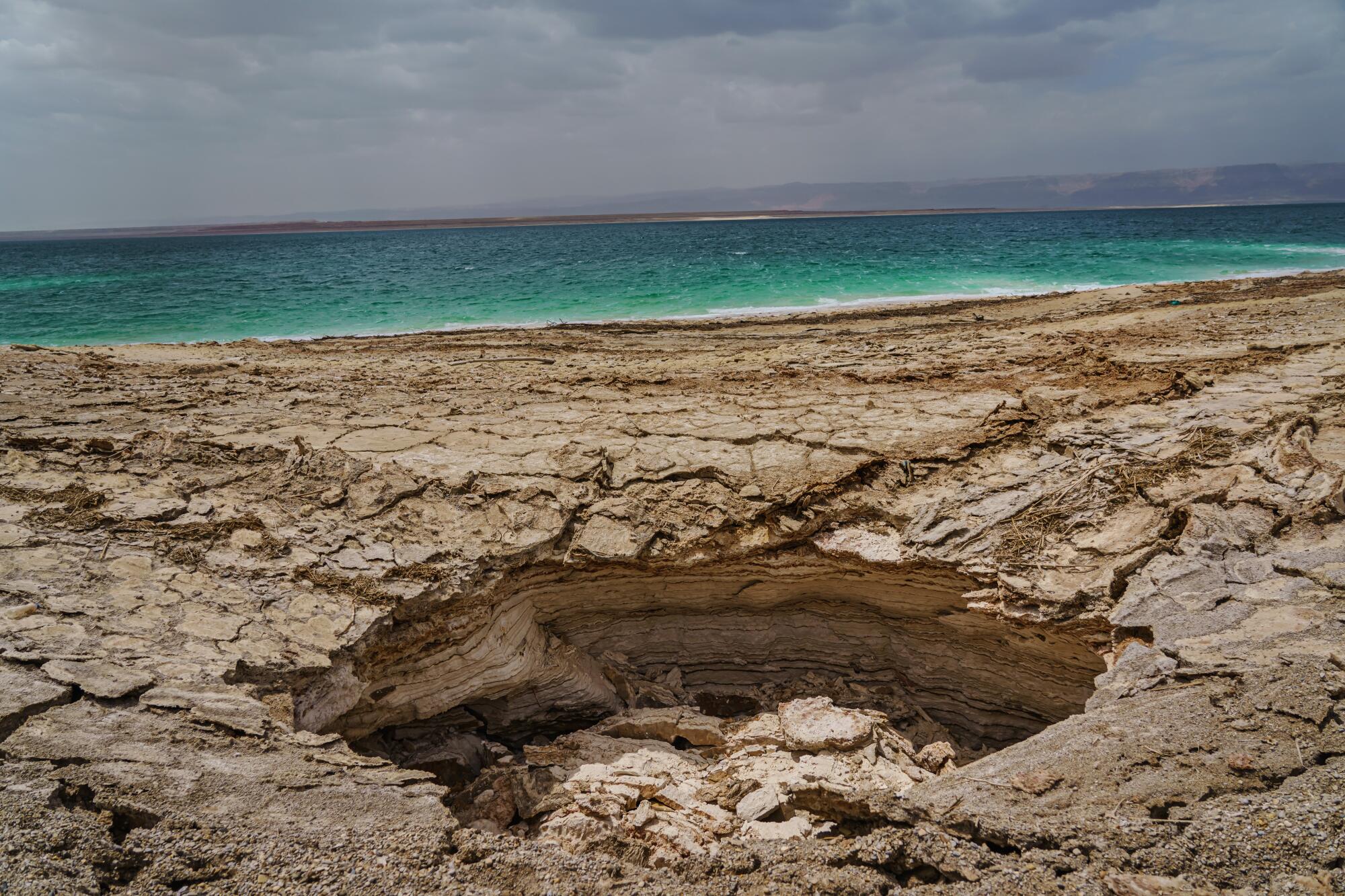
Though Jordan is uniquely challenged, it’s a preview of what the region faces as a whole. Middle Eastern nations top the list of most water-stressed countries, the World Resources Institute says.
The region is also a “global hotspot of unsustainable water use,” according to 2017 World Bank report, and whatever water is available is further degraded by brine discharge from desalination, pollution and untreated wastewater. Poor water quality costs governments as much 2.5% of their gross domestic product.
Making matters worse are broiling summers, with the Max Planck Institute for Chemistry projecting average daytime temperatures will exceed 116 degrees and reach almost 90 by night. (And it’s not just estimates; the temperature in Mitribah, in northern Kuwait, reached 129 degrees in 2016.)
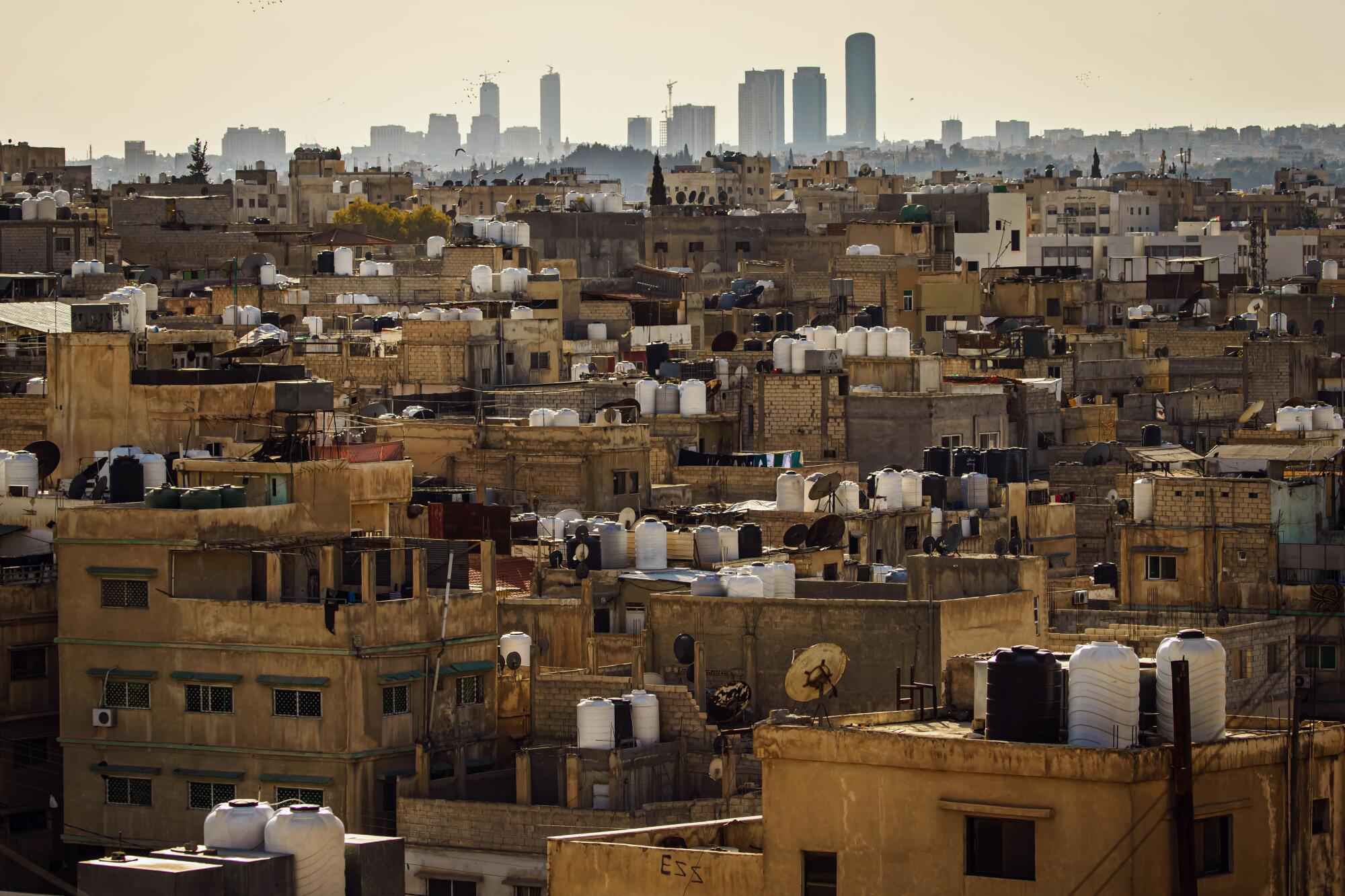
Much of Jordan’s water problem is a simple matter of math: In the 1950s, its population numbered half a million people. Now there are more than 10 million in a country whose water supply, researchers say, can’t sustain a population exceeding 2 million. Residents make do with 135 cubic meters, or about 36,000 gallons, of water per person per year; the United Nations defines “absolute scarcity” at 500 cubic meters per year.
That population explosion is less a result of Jordanians’ fertility than it is of the country’s reputation as a so-called oasis of stability in a not-so-stable neighborhood.
The kingdom is home to Palestinians pushed out by the creation of Israel in 1948 and the subsequent 1967 conflict; Lebanese escaping civil war in the ‘80s; Iraqis fleeing U.S. bombardment and sanctions; more than a million Syrians after 2011, along with Yemenis and Libyans — if there’s a regional conflict, Jordan is probably hosting its refugees.
A 2016 census estimated the number of refugees at 2.9 million, and that’s including the approximately 1 million migrant workers in the country.
“The Syrian crisis alone raised demand for water an average of 20%,” Salameh says. It’s double that amount in northern areas of the kingdom, where most of the refugees reside, he adds.
It’s little better on the supply side, where Jordan has to contend with the tyranny of geography.
Go north from Ghor Haditha, past the traditional baptismal site of Jesus Christ on the Jordan River (now reduced to a sewage-contaminated trickle in some parts), continue east along its main tributary, the Yarmuk River, where Lawrence of Arabia once tried and failed to blow up an Ottoman railroad, and you encounter the Wehda Dam, a 360-foot concrete embankment on Jordan’s border with Syria.
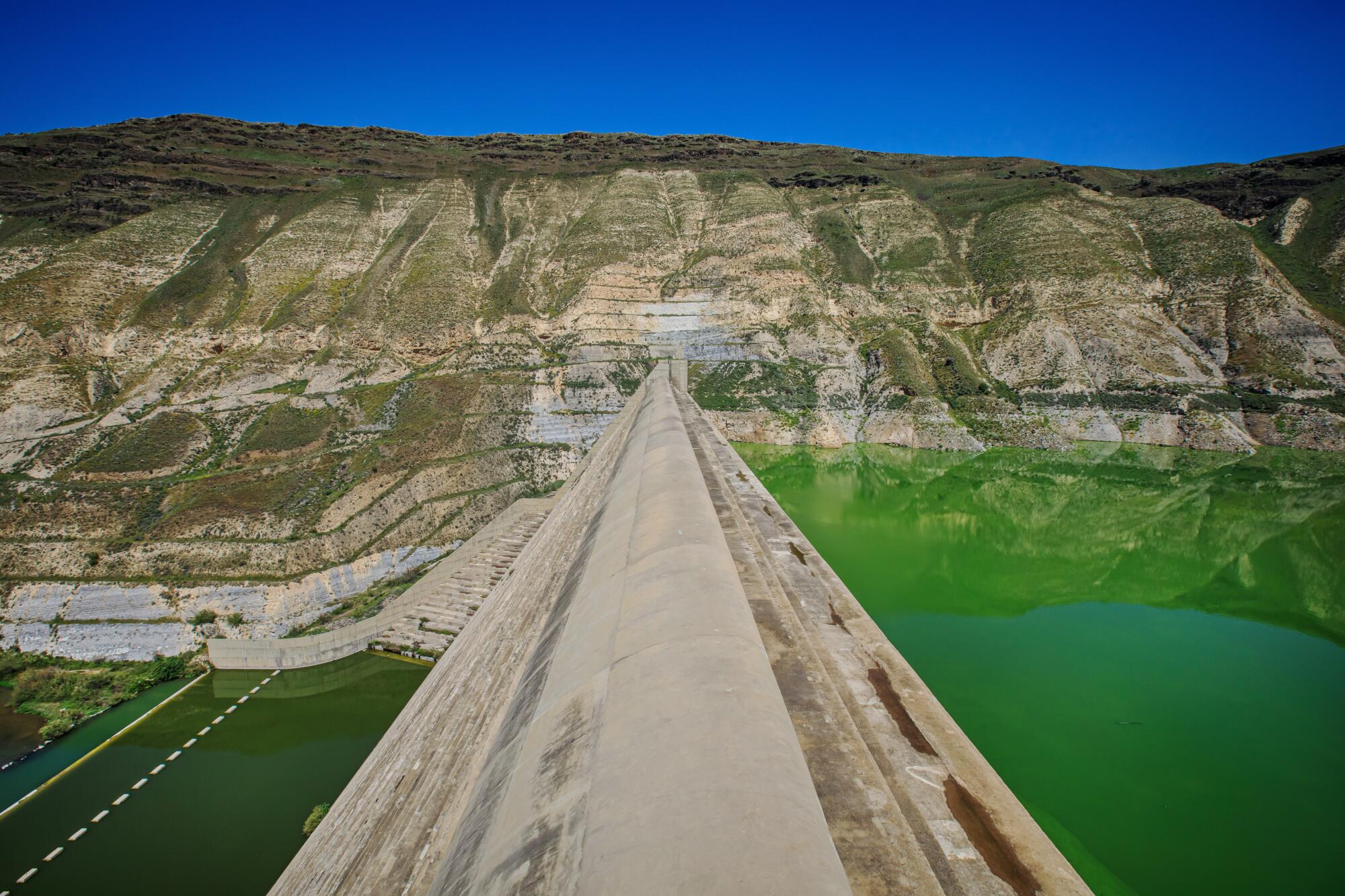
Its capacity of 110 million cubic meters makes it Jordan’s largest dam, a reliable source of more than a third of the country’s water supply. But it’s never been more than half full. That’s because Syria, which controls the Yarmuk River’s flow into Jordan, has built upstream more than 40 dams and thousands of wells to irrigate its own crops, leaving Jordan with only a fifth of its share.
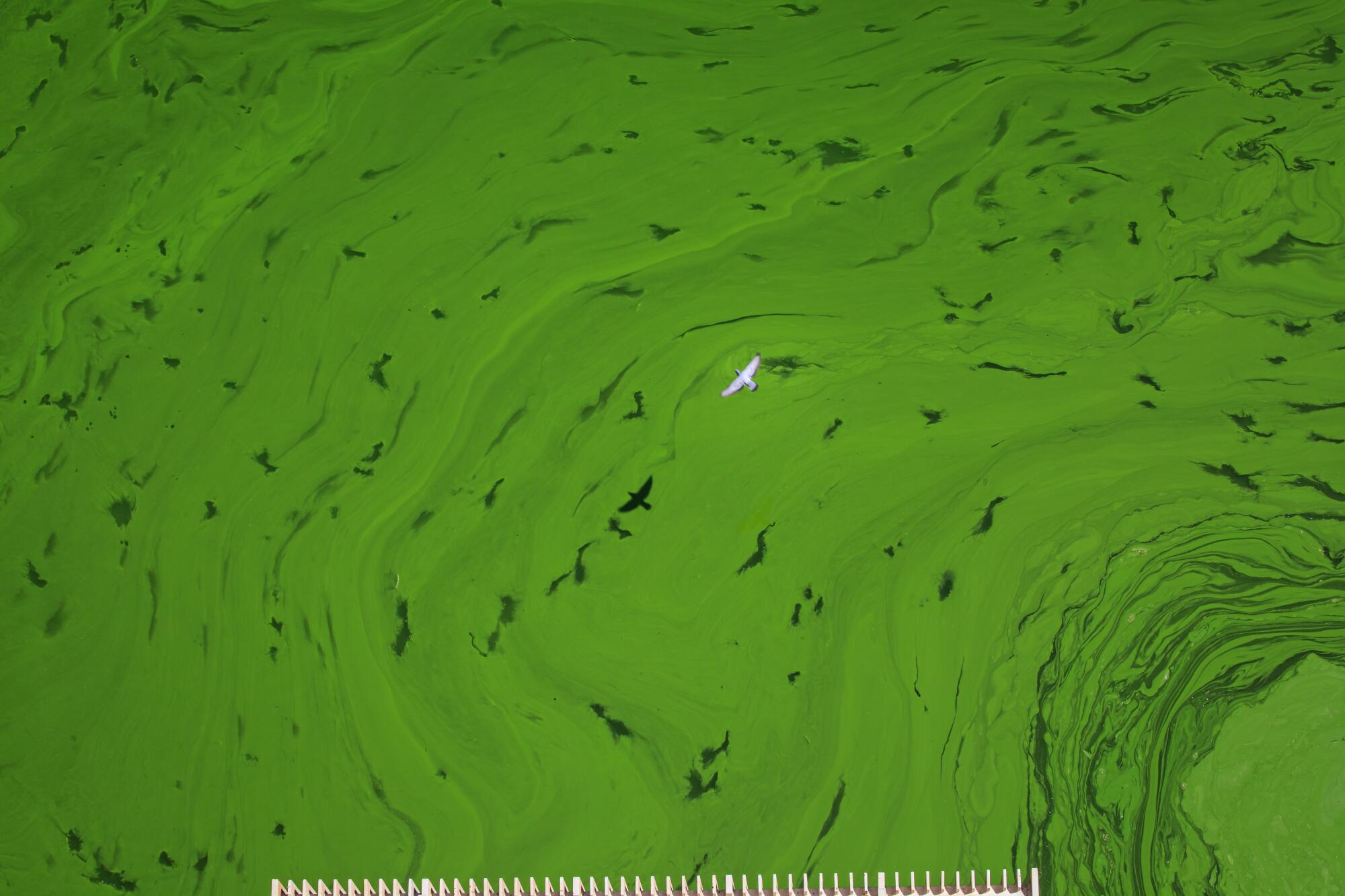
“We were supposed to expand the dam and build a hydroelectric plant. The plan was we would get water, and the Syrians would get power,” said Munther Maayeh, one of the dam’s managers. “But the water we receive from the Syrians isn’t anywhere near enough for that.”
Israel too has diverted some 600 million cubic meters of water in the Sea of Galilee — another lake — from the Jordan River. The result has been a 90% plunge in the river’s flow to a paltry 200 million cubic meters per year. (Under the 1994 peace agreement, Israel regularly conducts transfers of water from the Jordan River to the kingdom.)
To make up the shortfall, Jordan increasingly turned to nonrenewable water sources such as aquifers. Jordan has 12 of them, but is already pumping 160% more than it should for them to be replenished; 10 are all but depleted.
The low supply coupled with burgeoning demand has forced the government to ration water delivery. In practical terms, that means most homes don’t get municipal water more than once a week. Many residents turn to illegal drilling of wells, Salameh says.
The Wehda Dam was designed as a water-sharing measure between Jordan and Syria. But because of low water levels, it has not worked out as planned.
On the outskirts of Amman, water tank trucks back up to a communal well equipped with 9-foot-high faucets. Raafat Awamleh, a driver with his 8-year-old son, Shahem, by his side, climbed up the side of his truck, slipped a rubber hose over one of the faucets and placed the other end into his tank.
“People call us from all over Amman to deliver water,” Awamleh said, adding that the area had some six similarly equipped communal wells. The coronavirus cut a portion of his business, including water deliveries to farmers, but he expected work to pick up soon.
“In the summer we have to do this all the time,” he said. “It just gets too hot and people need water.”
Jordan’s internal topography plays a role as well. More than half of Amman’s water supply, for example, comes from the Disi aquifer, some 200 miles south. Another portion is taken from the Azraq aquifer, 50 miles east.
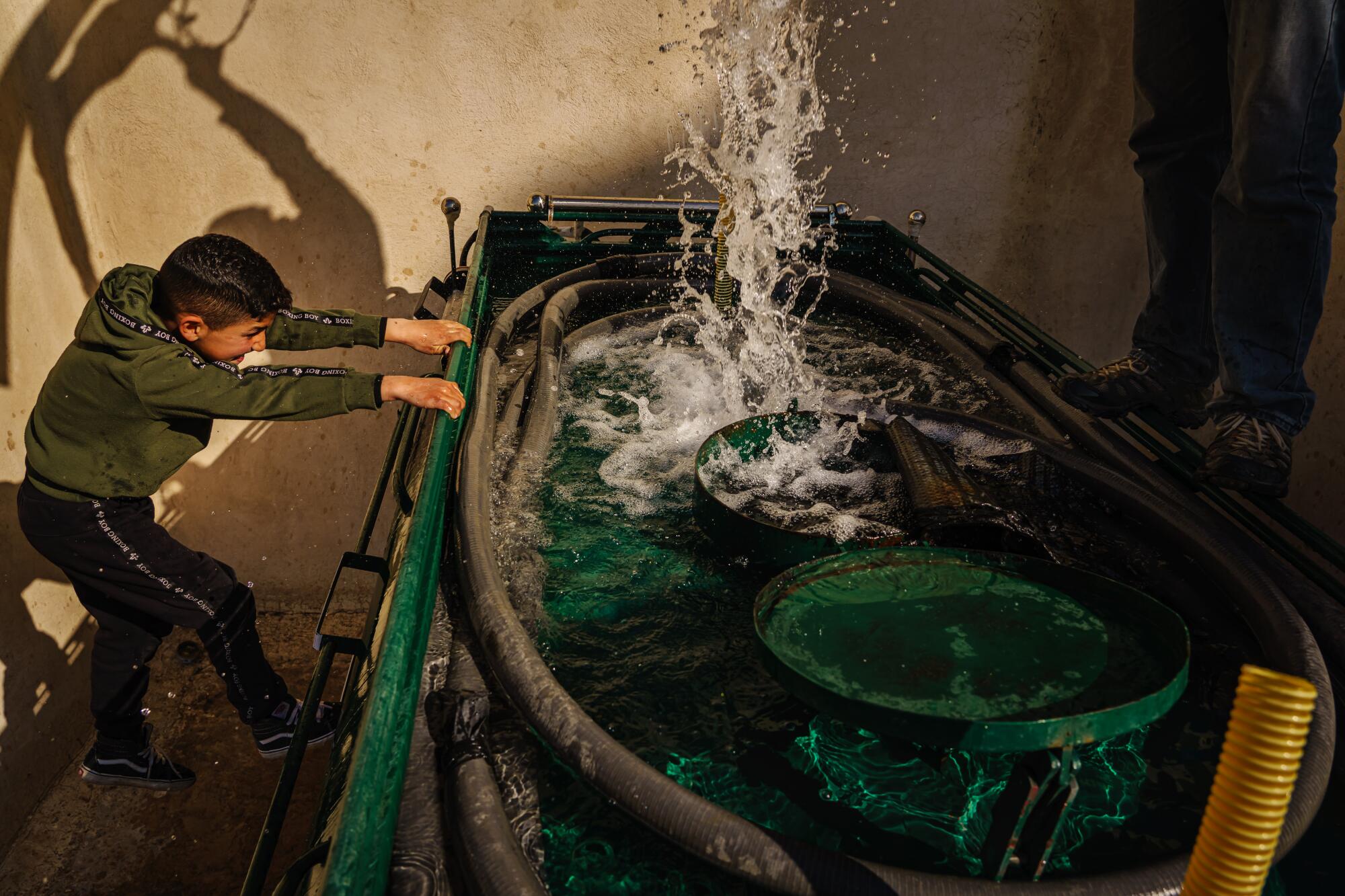
“That’s a huge expense on the state treasury,” Salameh says, estimating the cost at $4 per cubic meter from aquifer to tap. Power requirements for pumping water use up more than a sixth of the country’s total electricity production, the government says.
The failure of Jordan’s water management is increasingly apparent, says Raed Dawood, founder and head of Eco Consult, a water-use consulting firm. Rickety infrastructure means more than half of the water leaks out of pipes or is stolen. State subsidies for agriculture, a sector that consumes slightly more than 50% of Jordan’s water supply while contributing only 3% to 4% to its GDP, give farmers little incentive to use new — and expensive — irrigation techniques or choose crops that are more profitable.
“Water productivity here is about $1.50 per cubic meter. It’s $100 in the Netherlands,” Dawood says, adding that Jordan’s top crops are tomatoes and cucumbers, low-profit plants that consume a lot of water.
To make a point, he walks out of his office and returns with a plate of dates. They were plump, with a singed caramel-colored skin. The variety is known as Medjool and the kingdom is famous for them, Dawood says. This kind of crop, he adds, could more than quadruple the value farmers get out of their water.
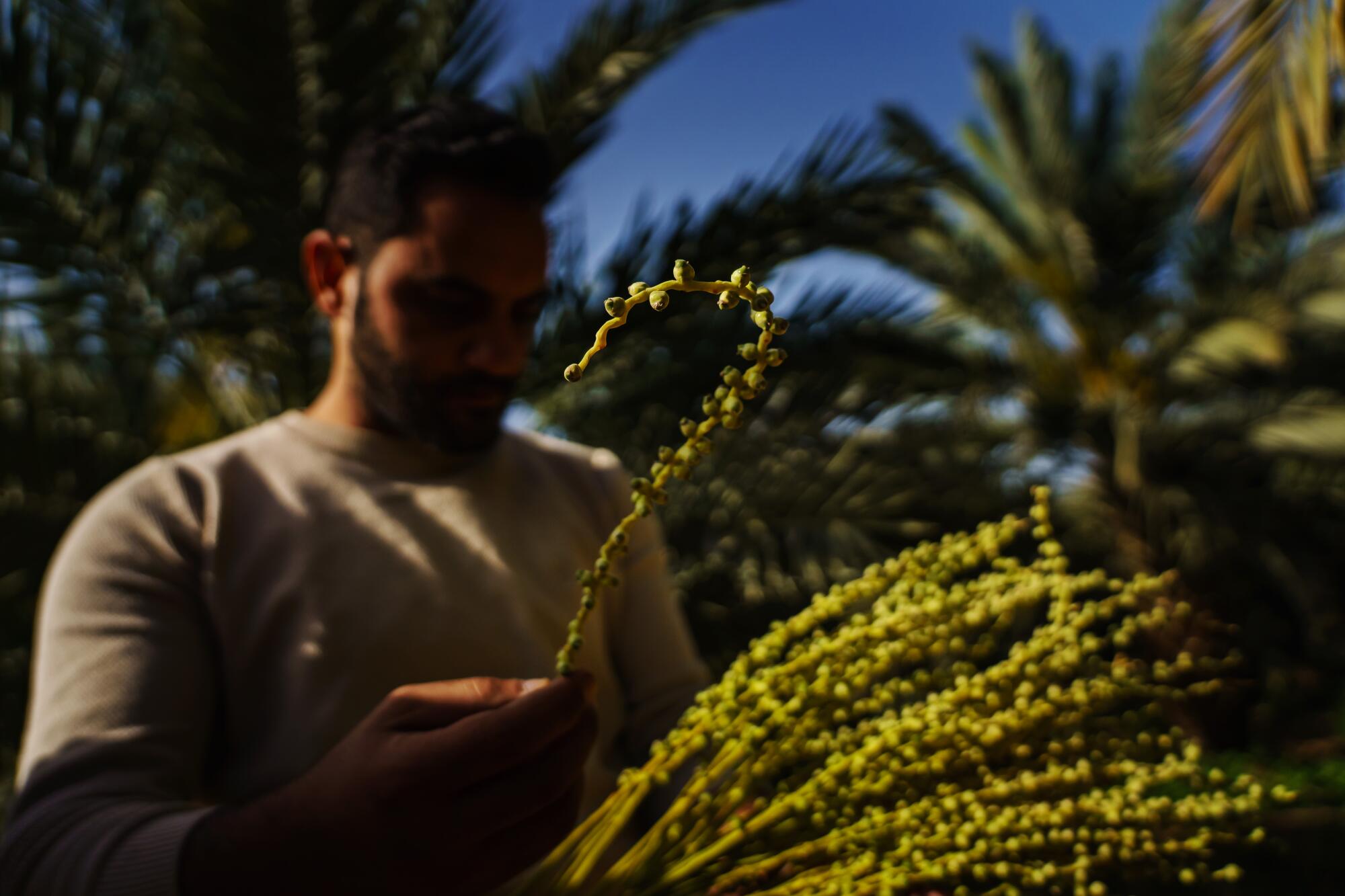
“We have to be selective and careful in what we grow,” he says.
“All these things are matters of policy, and yes, we’re a scarce-water country, but we have to use it effectively.”
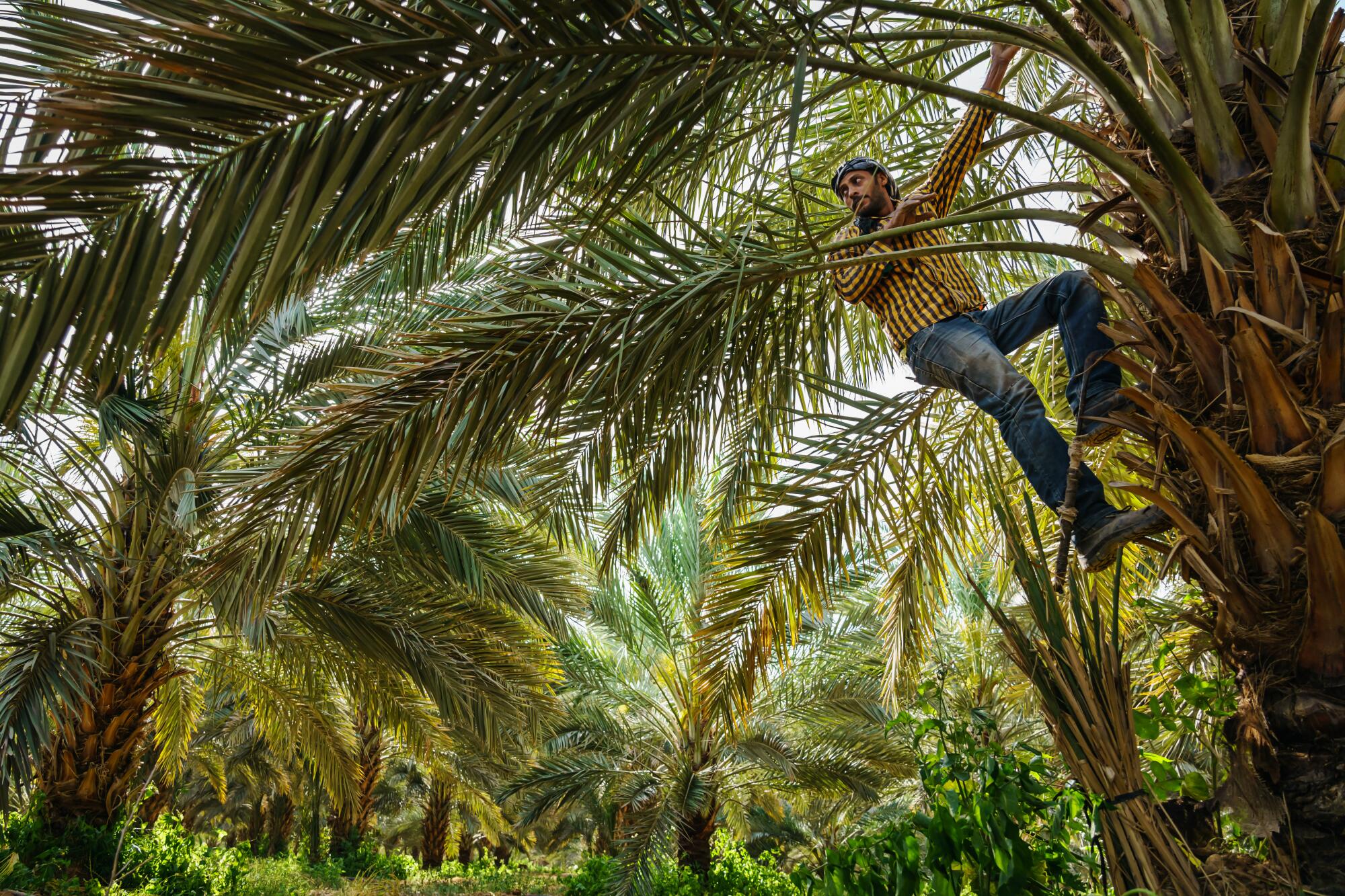
Back in Ghor Haditha, increasing industrialization, much of it centered on the Arab Potash Co., is exacerbating the water problem. The company, along with its Israeli counterpart, pumps Dead Sea water to extract minerals, adding to the sea’s retreat and compounding sinkhole formation, says William Ajalin, a resident and head of a local environmental association.
On the rooftop balcony of the association’s building, he points to the main highway bisecting Ghor Haditha: On one side lies the Dead Sea, with the foot of the Karak mountains on the other.
“People are already too afraid to do anything on the side by the Dead Sea,” he says.
“Of course we’re worried this is making it worse.”
But a change of behavior, including better conservation, would have to go beyond villages such as Ghor Haditha to cities, especially Amman, says Ammar Khammash, an architect who specializes in eco-friendly projects.
“We cannot continue like we did in the ‘70s and ‘80s. All the water of Azraq, we flushed it down the toilets of Amman,” he says. The solution, he says, is to incorporate water storage capacity in every building.
“Governments like big projects, but the solution involves smaller pieces: A place like Amman needs to become a ‘sponge city’ where every house doesn’t waste a single drop.”
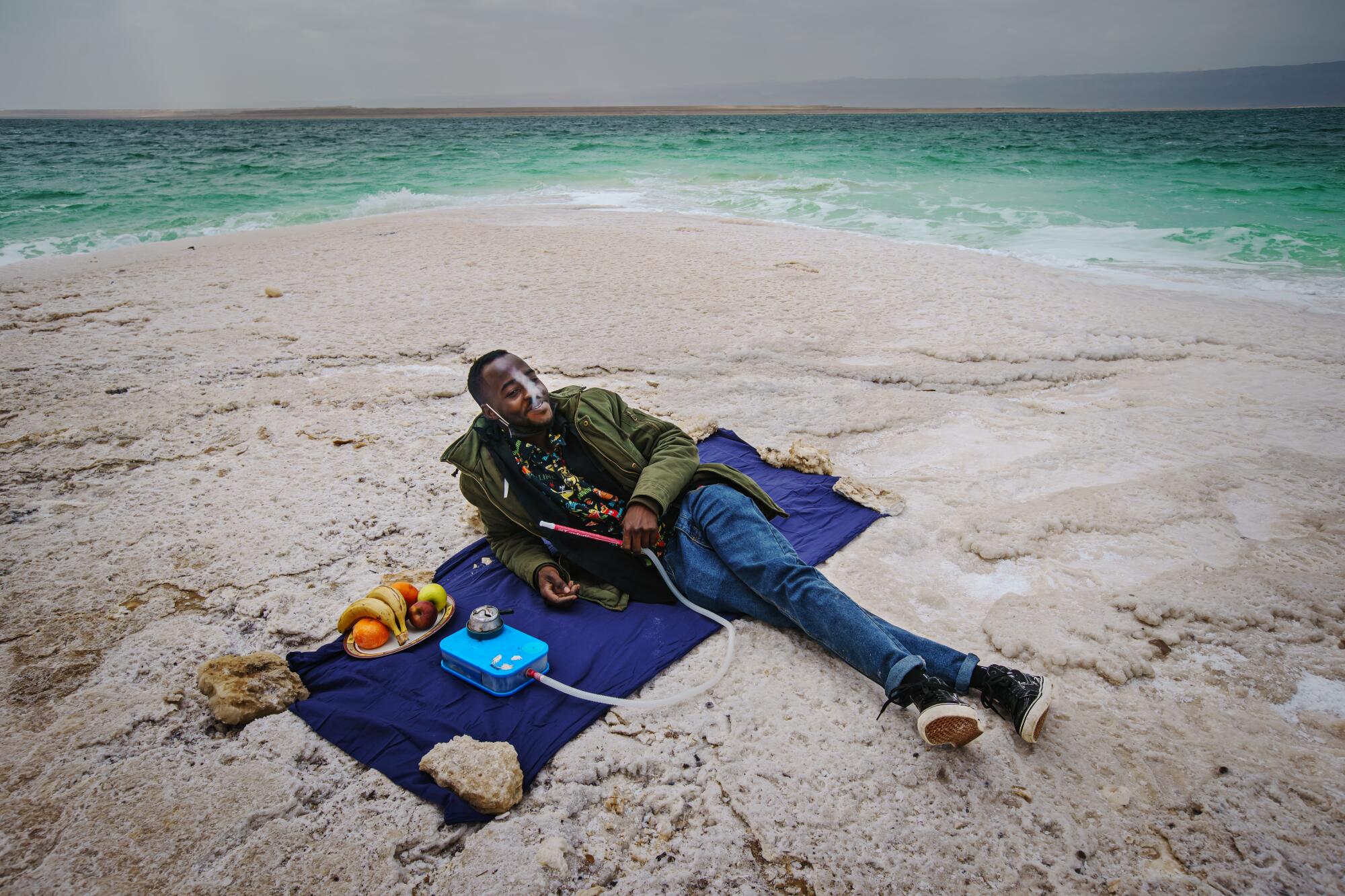
For now, the government is exploring other venues, such as Red to Dead, a joint project with Israel and the Palestinian Authority. It aims to build a desalination plant in Aqaba, Jordan’s sole outlet on the Red Sea, and dump the briny water to replenish the Dead Sea. The project has been on the books since 2005 without much progress.
In any case, relations between Jordan and Israel have reached a nadir, with diplomatic spats flaring over the last year between Israeli Prime Minister Benjamin Netanyahu and King Abdullah II. The last such incident was resolved Monday when Netanyahu approved Amman’s request for extra water rations from the Jordan River, almost a month after the Jordanian government asked for it. (The peace agreement allows for Jordan to request additional water supplies.)
That has forced the kingdom to look inward, conducting deep-water exploration of desert areas and drilling wells more than a mile deep. Those efforts are expected to yield 70 million cubic meters of water by the project’s end. It’s expensive, but essential at a time when the kingdom’s relations with its neighbors over water remain a challenge.
“You can’t predict what the political situation is going to be,” Salameh says.
“As long as there is no horizon for peace in the area, Jordan will remain vulnerable to the challenges imposed on it by its situation with water.”
(This is the second in a series of occasional articles about how climate change and water scarcity are affecting the politics and landscape of the Middle East.)
More to Read
Sign up for Essential California
The most important California stories and recommendations in your inbox every morning.
You may occasionally receive promotional content from the Los Angeles Times.
